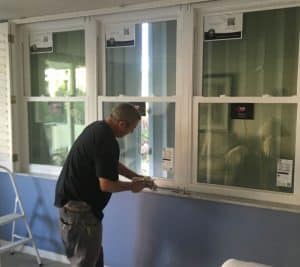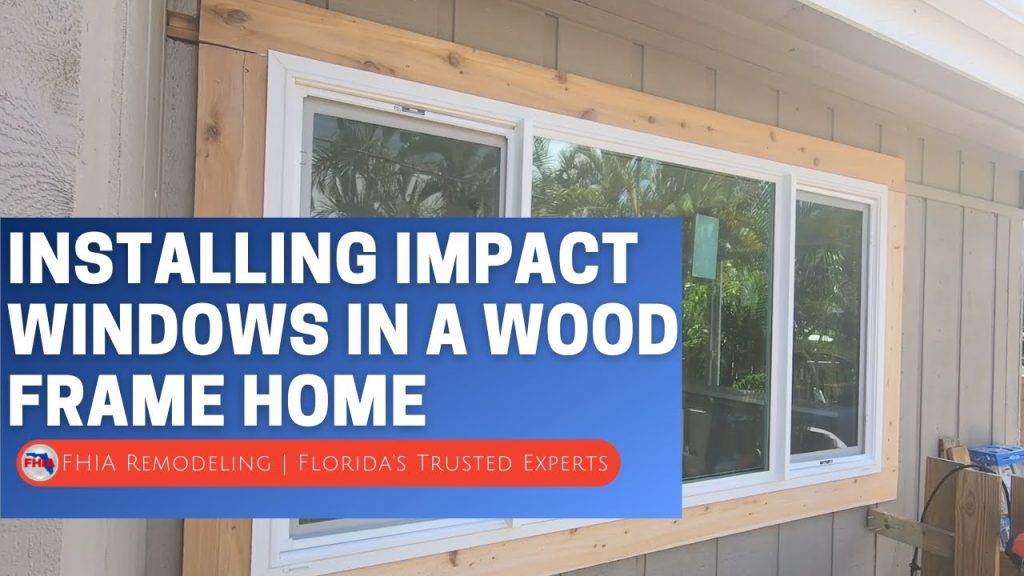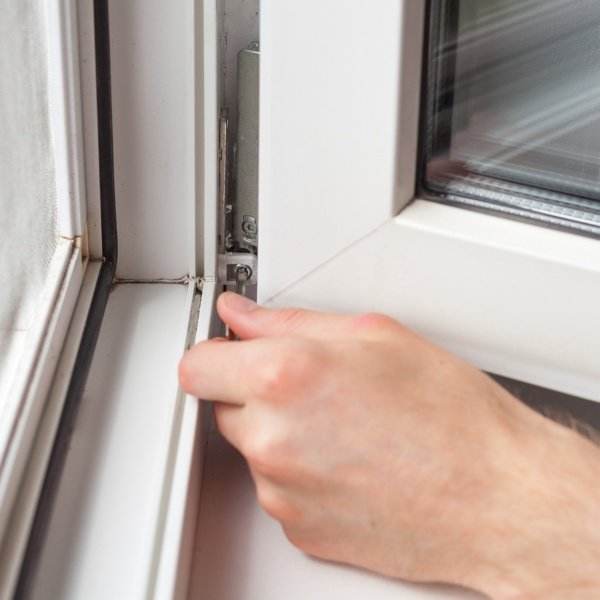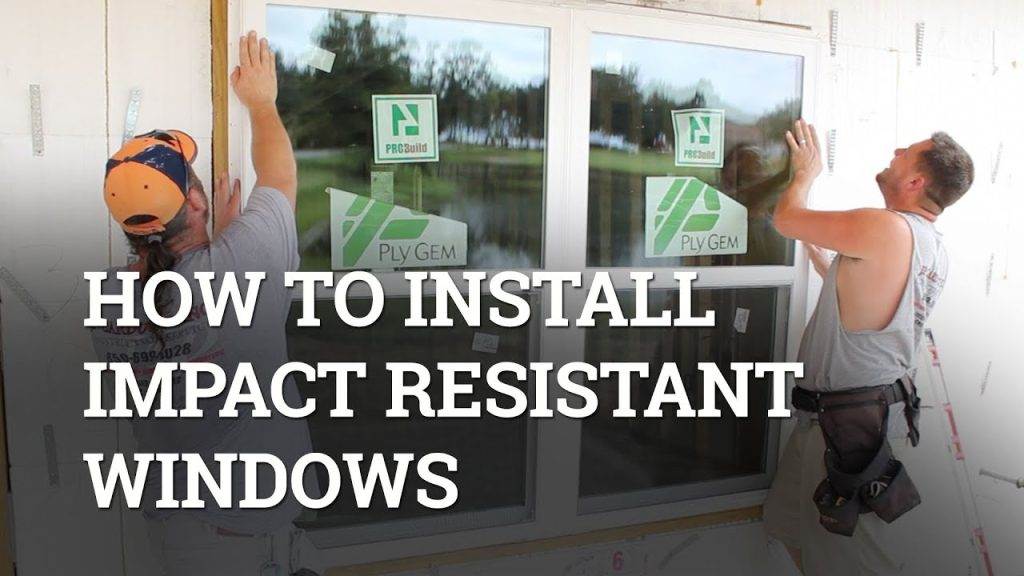In this article, we will explore the question of whether you can install impact windows yourself. We will discuss the advantages and disadvantages of DIY installation, as well as the necessary skills and tools you would need. By the end, you will have a clearer understanding of whether taking on this project yourself is feasible and practical.

This image is property of www.maxguardhurricane.com.
What are impact windows?
Impact windows, also known as hurricane windows or storm windows, are specially designed windows that are built to withstand high winds and flying debris during severe weather conditions, such as hurricanes or tornadoes. These windows are made with laminated glass, which consists of two or more layers of glass bonded together with a layer of clear plastic film in between. This construction provides exceptional strength and resistance to impact.
Definition of impact windows
Impact windows are designed to protect homes and buildings from the destructive forces of hurricanes, strong winds, and flying debris. They are made with laminated glass, which is highly resistant to breaking and shattering upon impact. In addition to their impact resistance, these windows also provide other benefits such as energy efficiency, noise reduction, and enhanced security.
How do impact windows work?
The key to the strength and durability of impact windows lies in their construction. The laminated glass used in these windows is designed to absorb the energy from an impact and prevent the glass from shattering. When an object strikes the window, the outer layer of glass may crack, but the inner layer and the plastic film hold the glass in place, preventing it from breaking and causing further damage to the property. This design also helps to minimize the risk of injury from flying glass shards.
Factors to consider
Before deciding to install impact windows yourself, there are several important factors to consider.
Professional installation vs DIY
One of the first things to consider is whether you have the necessary skills and experience to install impact windows properly. While DIY installation can save you money, it can also be challenging and time-consuming if you are not familiar with the process. Professional installation ensures that the windows are installed correctly and according to industry standards.
Tools and materials needed
Installing impact windows requires specific tools and materials, such as a pry bar, caulk gun, screws, and sealant. Before attempting the installation, it is important to ensure that you have all the necessary equipment and supplies on hand.
Safety considerations
Installing impact windows can be physically demanding and potentially dangerous. It often involves working at heights and handling heavy materials. It is essential to take proper safety precautions, such as wearing protective gear and using appropriate lifting techniques. If you are not comfortable working at heights or handling heavy objects, it may be best to hire a professional.
Step-by-step installation process
If you decide to proceed with the DIY installation of impact windows, here is a step-by-step guide to help you through the process.
Preparing the window opening
Before installing the impact window, you need to prepare the window opening. This involves removing the old window, cleaning the opening, and ensuring that it is structurally sound and free from any defects.
Measuring and ordering the impact window
Accurate measurements are crucial to ensure that the impact window fits properly in the opening. Measure the height, width, and depth of the opening and order the window accordingly. It is recommended to consult the manufacturer’s instructions or seek professional guidance for accurate measurements.
Removing the old window
Carefully remove the old window from the opening, taking care not to damage the surrounding frame or the interior and exterior finishes. Follow any specific instructions provided by the manufacturer for removing the window.
Installing the new impact window
Place the new impact window in the opening, ensuring that it is centered and level. Use shims or other appropriate methods to adjust the window and achieve a proper fit. Consult the manufacturer’s instructions for specific installation guidelines.
Securing the window frame
Once the window is properly positioned, secure it to the window opening using screws or other recommended fasteners. Make sure the window is securely anchored to prevent any movement or shifting during strong winds.
Proper sealing and insulation
To ensure proper energy efficiency and weather resistance, apply sealant around the edges of the window frame. This helps to prevent air and water infiltration. Follow the manufacturer’s guidelines for the recommended sealant and application method.
Benefits of DIY installation
While professional installation offers a level of expertise and assurance, there are several benefits to installing impact windows yourself.
Cost savings
DIY installation can save you money on labor costs associated with professional installation. By investing your time and effort, you can significantly reduce the overall cost of installing impact windows.
Sense of accomplishment
Installing impact windows yourself can provide a sense of accomplishment and satisfaction. It allows you to take an active role in improving the safety and resilience of your home. The hands-on experience can also help you gain valuable skills for future projects.
Customization options
When installing impact windows yourself, you have the freedom to choose the specific windows that meet your desired style and design preferences. You can explore various options and select the ones that best fit your aesthetic preferences and overall vision for your home.

This image is property of i.ytimg.com.
Risks of DIY installation
While there are benefits to DIY installation, it is important to be aware of the potential risks and drawbacks.
Lack of professional expertise
Installing impact windows requires a certain level of expertise and knowledge. Without professional training, you may not fully understand the necessary steps and techniques involved in the installation process. This could lead to improper installation and compromised performance of the windows.
Potential for mistakes and damage
DIY installation carries the risk of mistakes, such as inaccurate measurements or improper sealing, which can result in compromised window performance and reduced effectiveness during severe weather conditions. Additionally, mishandling the window or tools during installation could lead to damage to the window or surrounding areas.
Voiding warranty
If you choose to install impact windows yourself, it is important to review the warranty provided by the manufacturer. Some manufacturers may require professional installation to maintain the validity of the warranty. Installing the windows yourself could potentially void the warranty, leaving you responsible for any future repairs or replacements.
Obtaining necessary permits
Before starting any window installation project, it is important to research and comply with local building codes and regulations. Obtaining the necessary permits is essential to ensure that the installation meets safety standards and requirements.
Research local building codes
Check with your local building department to determine the specific requirements and regulations for installing impact windows. This may include guidelines for the size and type of windows, as well as structural and safety requirements.
Applying for permits
Once you have familiarized yourself with the local building codes, you will need to apply for the necessary permits before starting the installation. You may need to provide detailed plans or specifications of the window installation, as well as pay any associated fees.

This image is property of stswindows.com.
When to hire a professional
While DIY installation can be a viable option for some homeowners, there are situations where hiring a professional is the best choice.
Complex window installation
If your window opening is complex, such as an arched or custom-shaped opening, it is recommended to hire a professional. They have the expertise and tools necessary to handle complicated installations and ensure a proper fit.
Limited DIY experience
If you have limited experience with DIY projects or lack confidence in your skills, it is advisable to hire a professional. Installing impact windows requires precision and attention to detail, and mistakes made during the installation process can have costly consequences.
Building regulations and inspections
Some regions have strict building regulations and require inspections during the window installation process. Hiring a professional ensures that the installation meets these requirements and avoids potential issues with compliance.
Choosing the right impact windows
When selecting impact windows for your home, there are several factors to consider.
Types and features of impact windows
There are various types of impact windows available, including single-hung, double-hung, casement, and sliding windows. Consider your needs and preferences in terms of functionality, aesthetics, and ease of use. Additionally, explore additional features such as tinted glass, decorative patterns, or enhanced security features.
Energy efficiency ratings
Look for impact windows that are energy-efficient to help reduce heating and cooling costs. Energy-efficient windows are designed to minimize heat transfer and maintain a comfortable indoor temperature, regardless of the weather conditions outside. Look for windows with a high energy efficiency rating, such as those certified by ENERGY STAR.
Warranty and durability
Review the warranty provided by the manufacturer to ensure that it covers any potential defects or issues with the impact windows. Additionally, consider the durability and longevity of the windows. Look for windows made from high-quality materials that are designed to withstand the test of time and resist wear and tear.

This image is property of www.aspwindows.com.
Maintaining impact windows
Once the impact windows are installed, regular maintenance is essential to ensure their long-term performance and durability.
Cleaning and maintenance tips
Clean the windows regularly to remove dirt, dust, and debris. Use a mild soap solution and a soft cloth or sponge to gently clean the glass and window frames. Avoid using abrasive materials that can scratch the glass or damage the frame.
Inspecting seals and hardware
Periodically inspect the window seals and weatherstripping to ensure they are intact and free from damage. Replace any worn or damaged seals to maintain optimal energy efficiency and prevent air and water infiltration. Check the hardware, such as locks and hinges, to ensure they are functioning properly.
Repairing minor damages
If you notice any minor damages, such as a small crack or loose seal, it is important to address them promptly. Contact the manufacturer or a professional for guidance on how to repair or replace damaged parts. Ignoring minor damages can lead to further problems and compromise the effectiveness of the windows.
Conclusion
In conclusion, the decision to install impact windows yourself depends on various factors such as your skill level, experience, and comfort with DIY projects. While DIY installation can provide cost savings and a sense of accomplishment, it also carries risks and requires careful consideration of the necessary permits and building codes. If you are unsure about your abilities or the complexity of the installation, it is advisable to hire a professional to ensure the windows are installed properly. Ultimately, the choice between DIY installation and professional installation should be based on a weighing of the benefits and risks, and if needed, consultation with professionals for guidance.

This image is property of i.ytimg.com.
